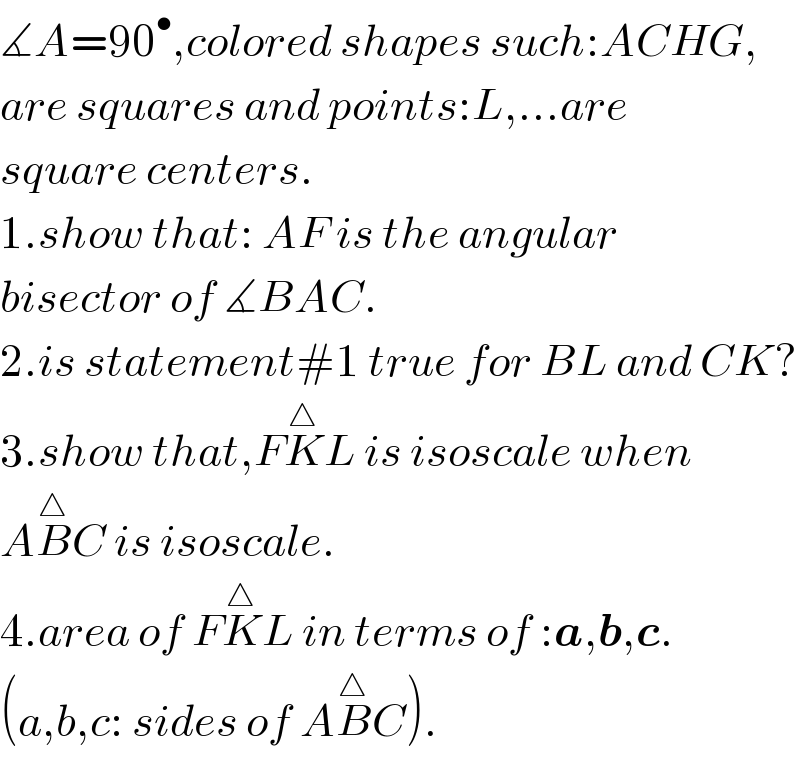
Question and Answers Forum
Question Number 47883 by behi83417@gmail.com last updated on 16/Nov/18

Commented by behi83417@gmail.com last updated on 16/Nov/18

Answered by behi83417@gmail.com last updated on 16/Nov/18
![#1. a circle passing from:A,B,C,also passes from F.because of: ∡BAC=∡BFC=90^• .BF=FC=(a/(√2)) so BF^(arc) =F^(arc) C⇒BA^� F=CA^� F.so AF,is bisector of BA^� C. or another way: FA=x cosFA^� B=((FA^2 +AB^2 −FB^2 )/(2FA.AB))= =((x^2 +c^2 −((a/(√2)))^2 )/(2xc))=((2x^2 +2c^2 −b^2 −c^2 )/(4xc))= =((2x^2 +c^2 −b^2 )/(4xc)) (i) cosFA^� C=((FA^2 +AC^2 −FC^2 )/(2FA.AC))= =((x^2 +b^2 −((a/(√2)))^2 )/(2xb))=((2x^2 +b^2 −c^2 )/(4xb)) (ii) (i)−(ii)=((b(2x^2 +c^2 −b^2 )−c(2x^2 +b^2 −c^2 ))/(4xbc))= =((2x^2 (b−c)−(b^3 −c^3 −bc^2 +cb^2 ))/(4xbc))= =(((b−c)(2x^2 −(b^2 +c^2 +bc)−bc))/(4xbc))= =(((b−c)(2x^2 −(b+c)^2 ))/(4xbc))=0 ⇒∡FAB=∡FAC⇒AF,is bisector. [ABCF,is cyclic.so: x.a=(a/(√2)).b+(a/(√2)).c⇒x=((b+c)/(√2))] #2. the answer is :no. S_(FK^△ L) =(1/2)FA.KL=(1/2).((b+c)/(√2)).((b+c)/(√2))=(((b+c)^2 )/4) .](Q47909.png)
Answered by behi83417@gmail.com last updated on 16/Nov/18

